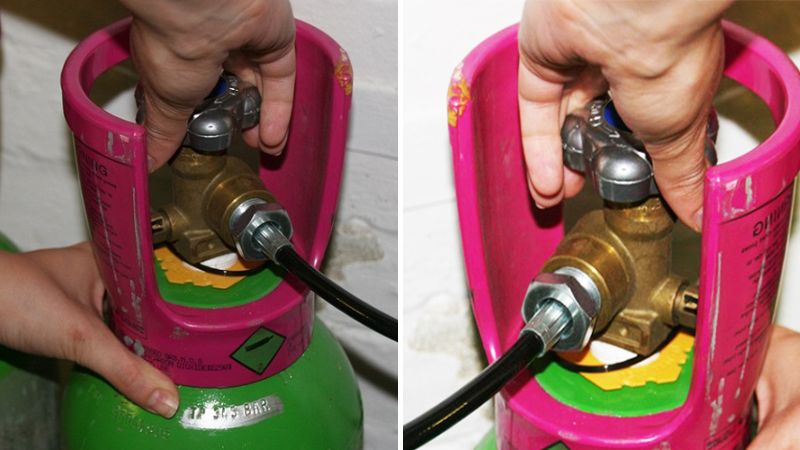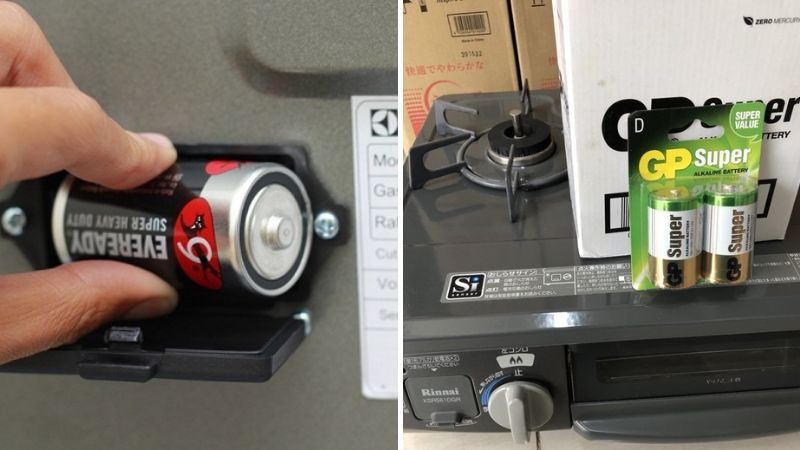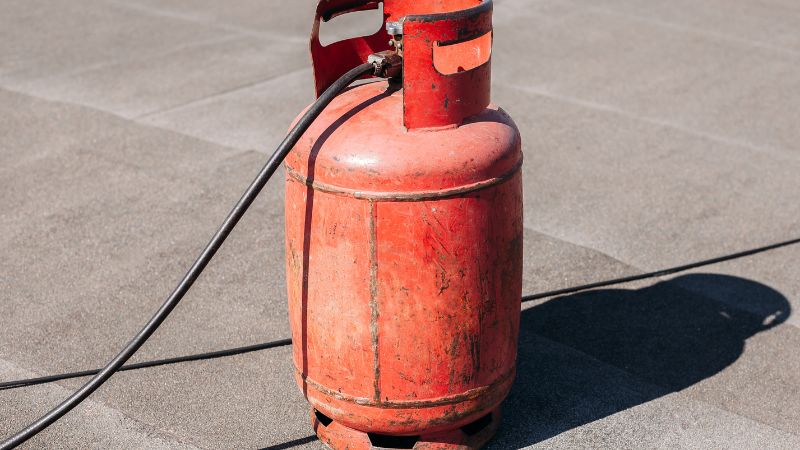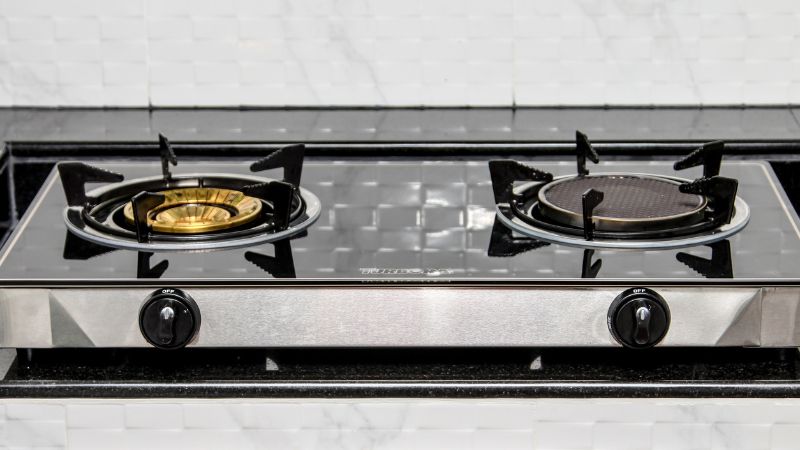Gas stoves are a common household appliance in most homes. It’s not uncommon to encounter issues with your gas stove, such as having gas in the tank but unable to ignite the burner. Here are 5 things to check if you find yourself in this situation:
1 Gas Cylinder Valve is Closed
It is a common practice for many families to lock the gas cylinder valve after using the gas stove to ensure safety. When the gas cylinder valve is locked, the gas is sealed off, preventing it from reaching the stove and producing a flame. Therefore, if your stove won’t light, check to see if you have opened the gas cylinder valve.
 Gas cylinder valve is closed, preventing the stove from lighting
Gas cylinder valve is closed, preventing the stove from lighting
2 Stove’s Battery Issues
The ignition system of a gas stove consists of a semiconductor circuit that uses a battery or electricity to produce a spark, which ignites the gas at the burner to create a flame. If your stove fails to light, there could be an issue with the battery, such as a dead battery, incorrect battery installation, or poor contact between the battery terminals
In this case, open the battery compartment and check if the battery is installed correctly, with the positive and negative terminals aligned properly. Also, inspect the battery terminals for any dirt or grime, and clean them if necessary. If the battery is dead, replace it with a new one.
 Stove’s battery issues
Stove’s battery issues
3 Dirty or Clogged Burner Ports
Over time, dirt and grime can build up on the burner ports, blocking the flow of gas and preventing the stove from lighting. To address this issue, use specialized needles to clear the clogged burner ports and thoroughly clean the burners to remove any accumulated dirt.
 Dirty or clogged burner ports
Dirty or clogged burner ports
4 Air in the Gas Hose
Air in the gas hose can occur when gas enters the hose but doesn’t escape, causing it to accumulate. To resolve this issue, perform the ignition process 3 to 5 times repeatedly to expel the excess air from the gas hose.
 Air in the gas hose
Air in the gas hose
5 High-Voltage Wire Not Insulated from Stove Body
When the humidity is high, moisture can accumulate on the high-voltage wire, causing electrical leakage to the stove’s metal components. To fix this, properly insulate the high-voltage wire and keep it away from the stove’s metal parts.
 High-voltage wire not insulated from the stove body
High-voltage wire not insulated from the stove body
These are the 5 possible reasons why your gas stove won’t light even though there’s gas in the tank. Thank you for reading, and stay tuned for more helpful articles on our website!

































